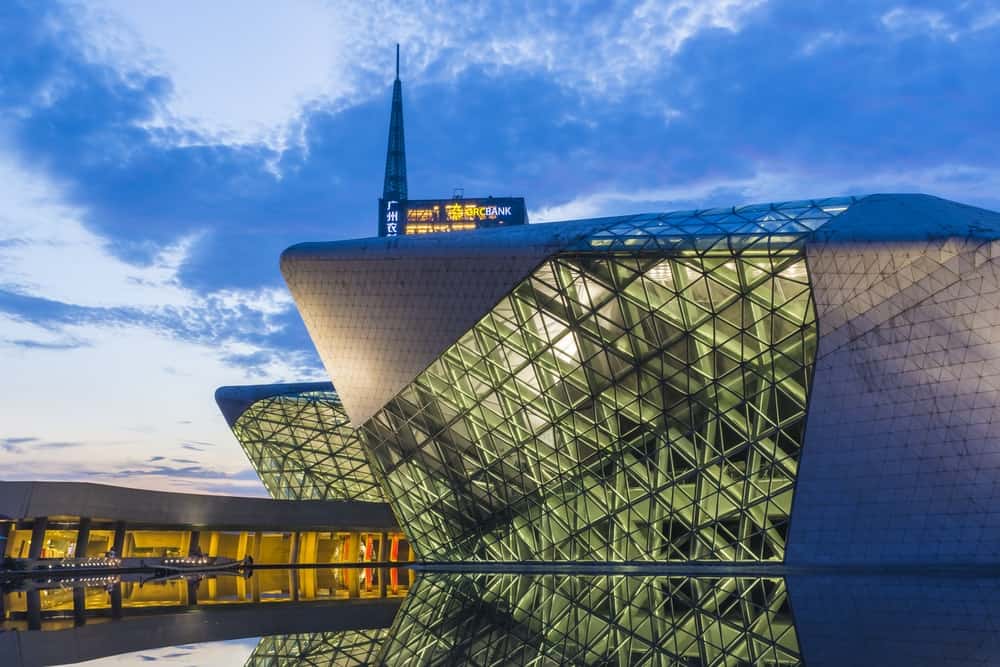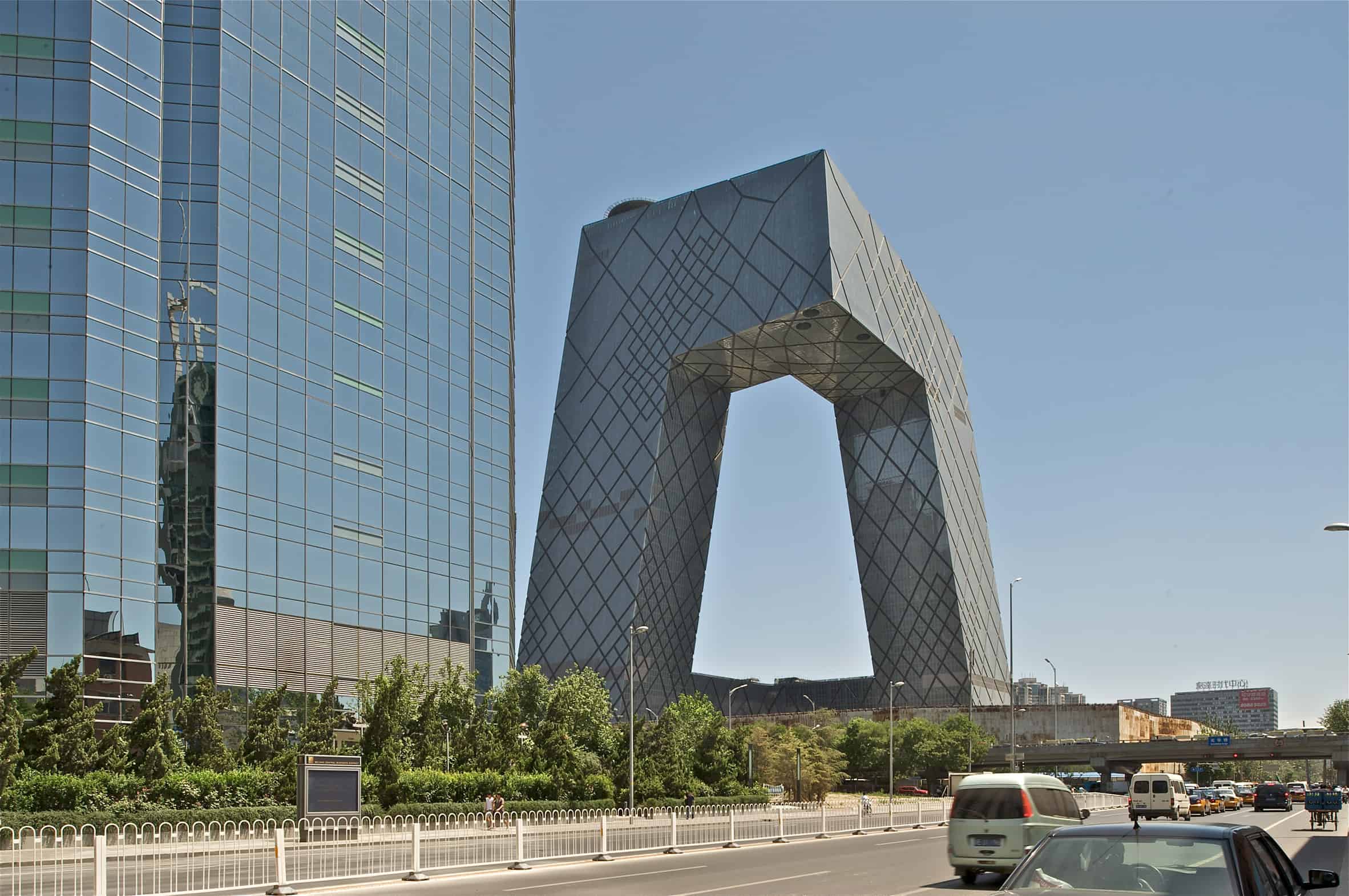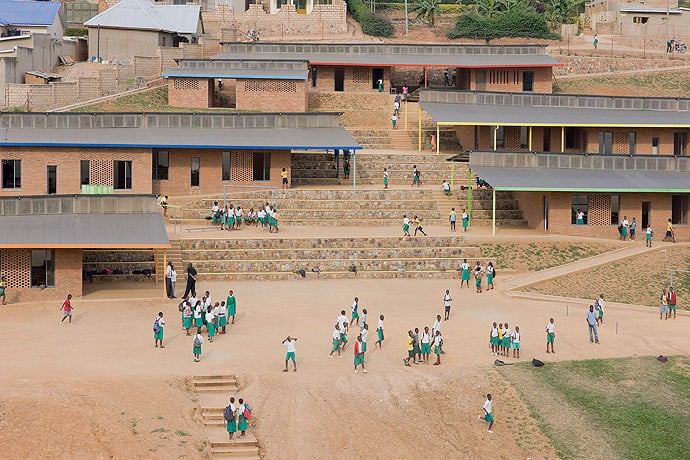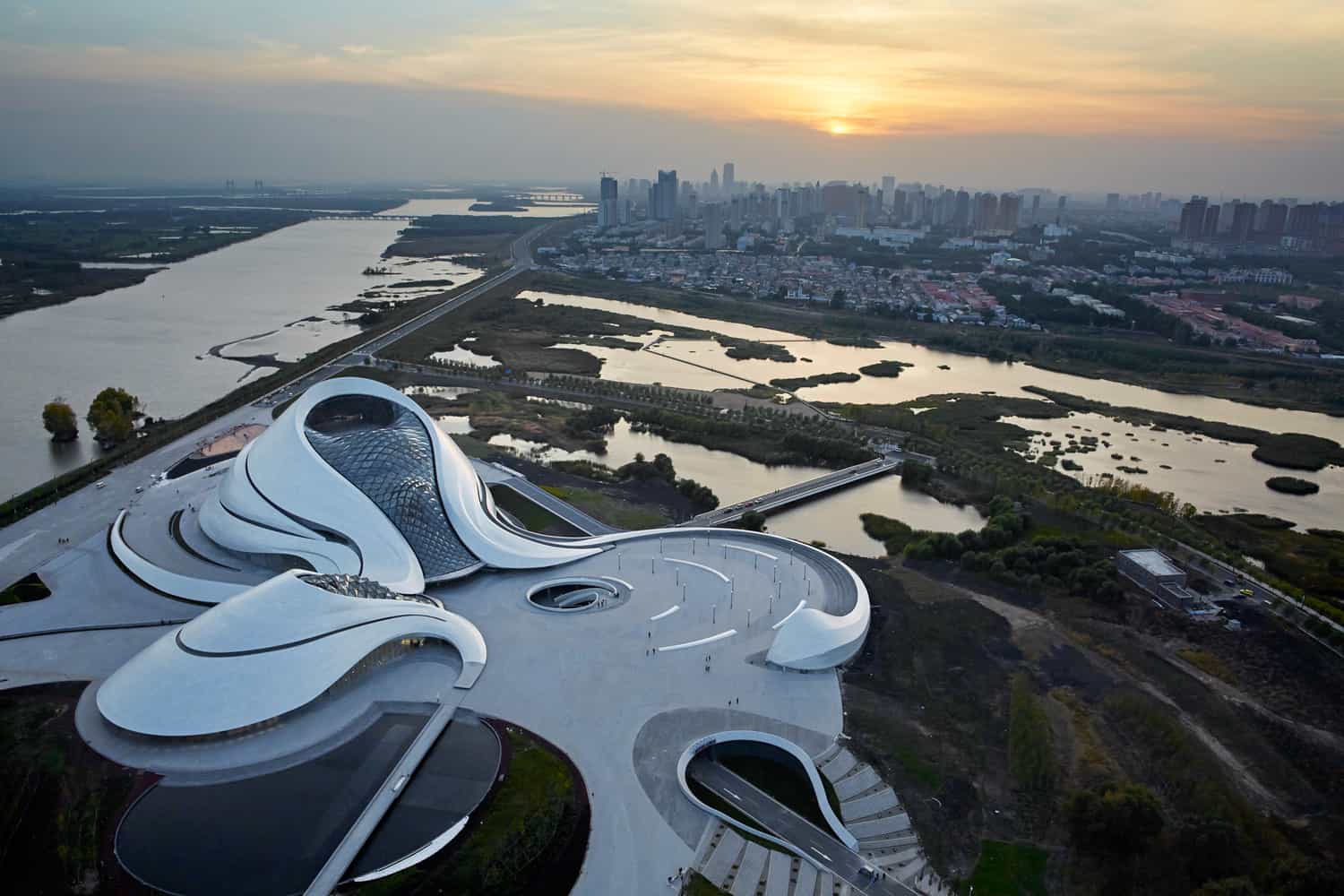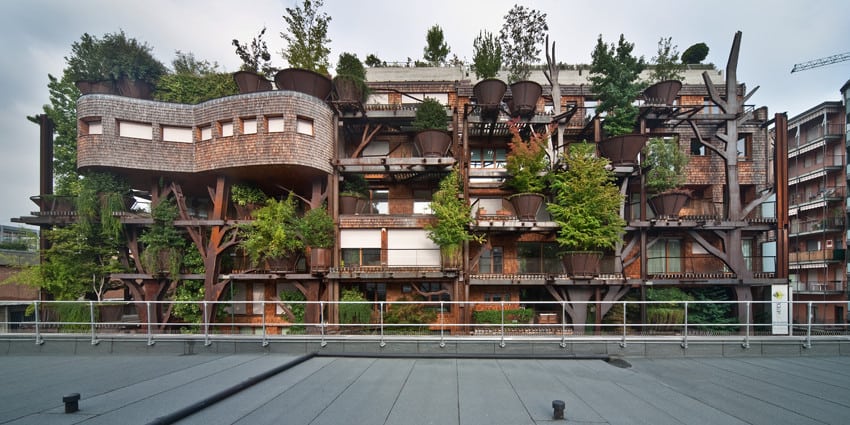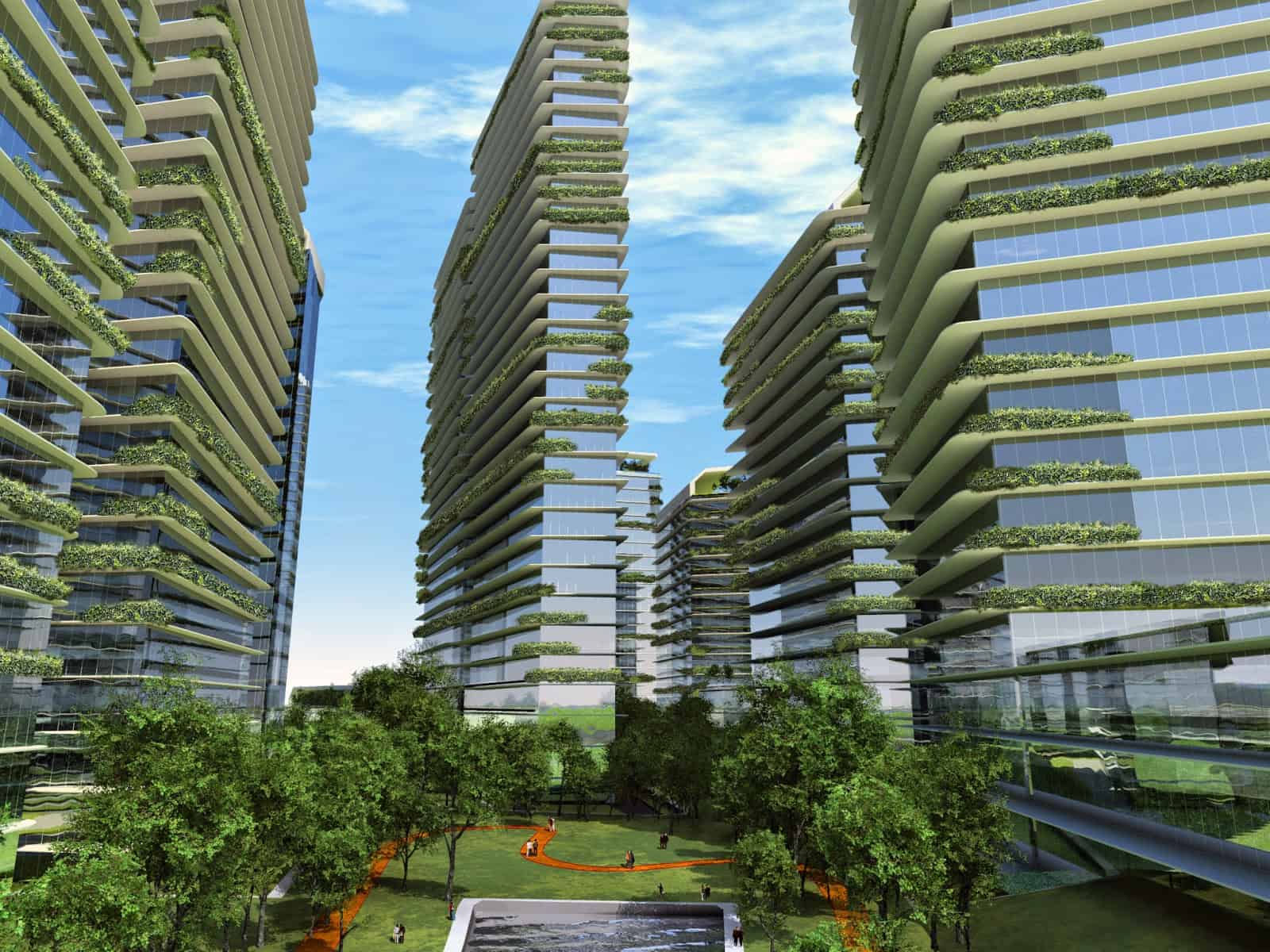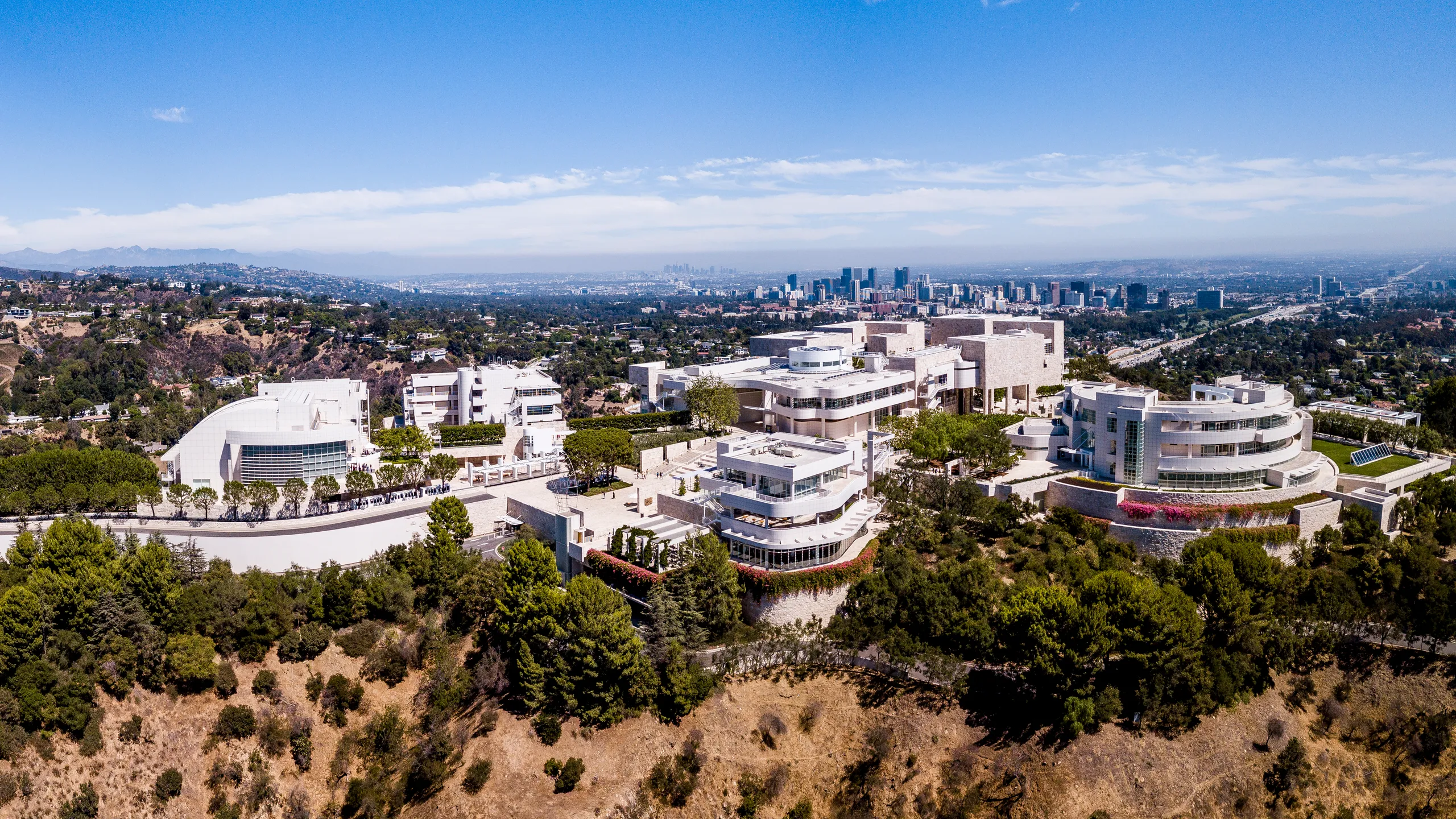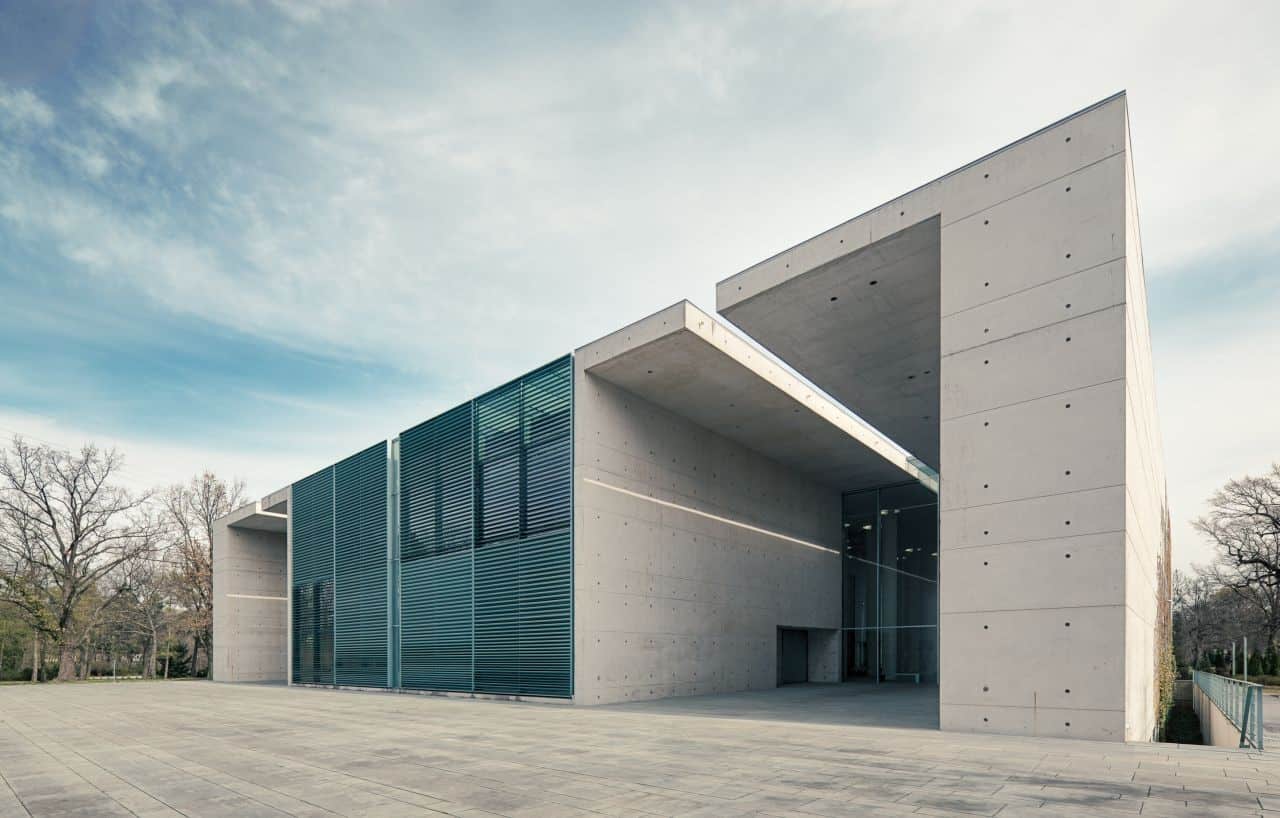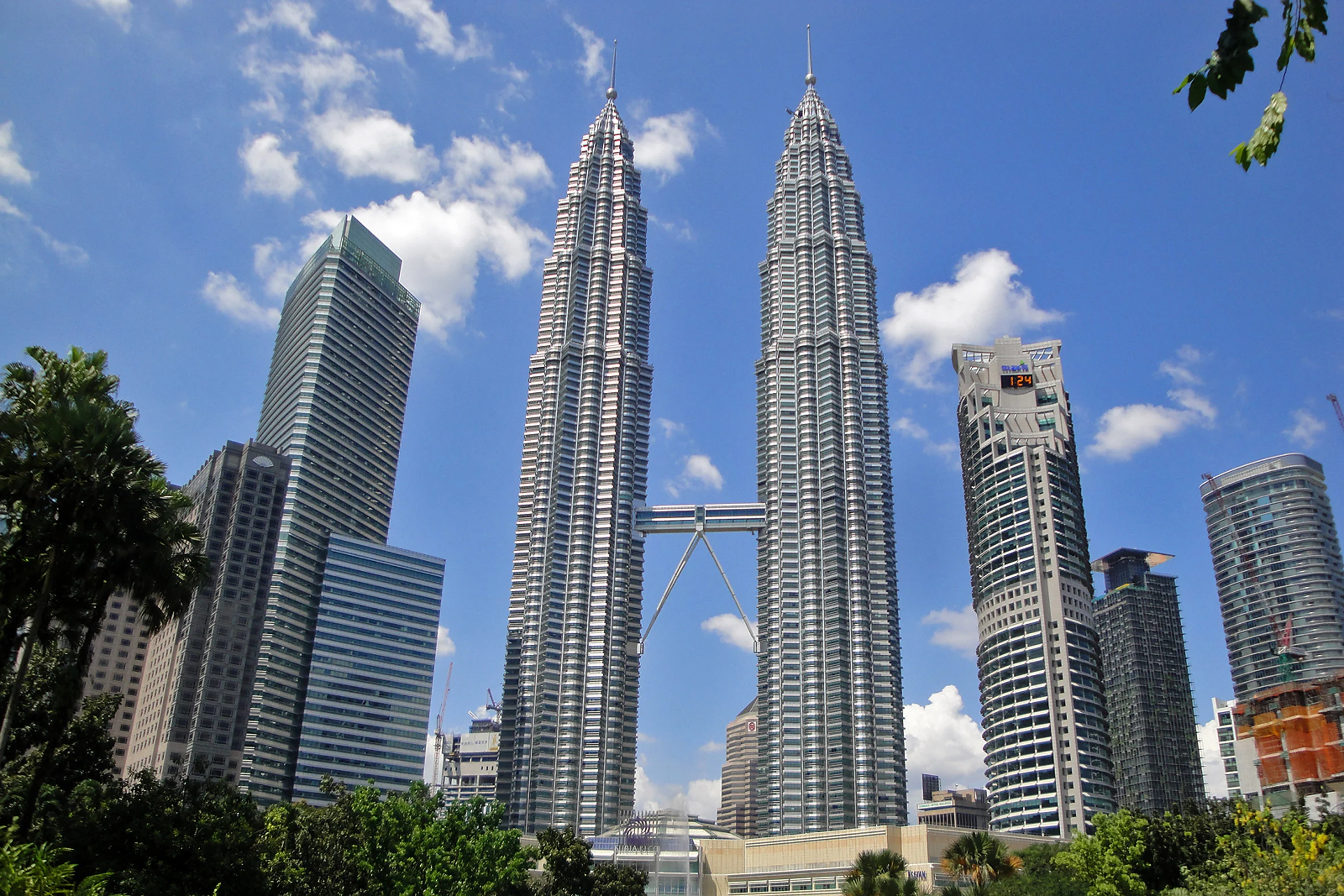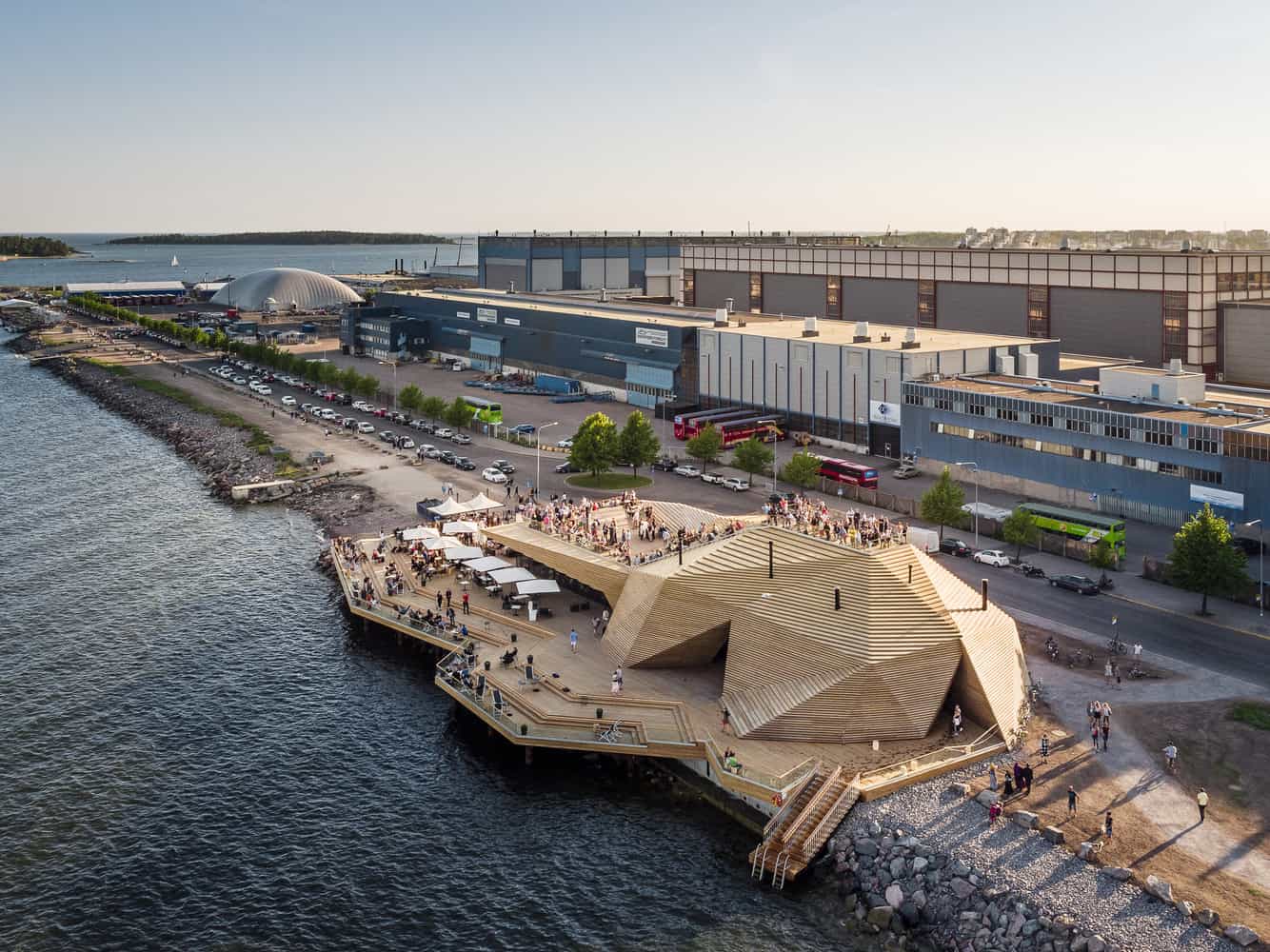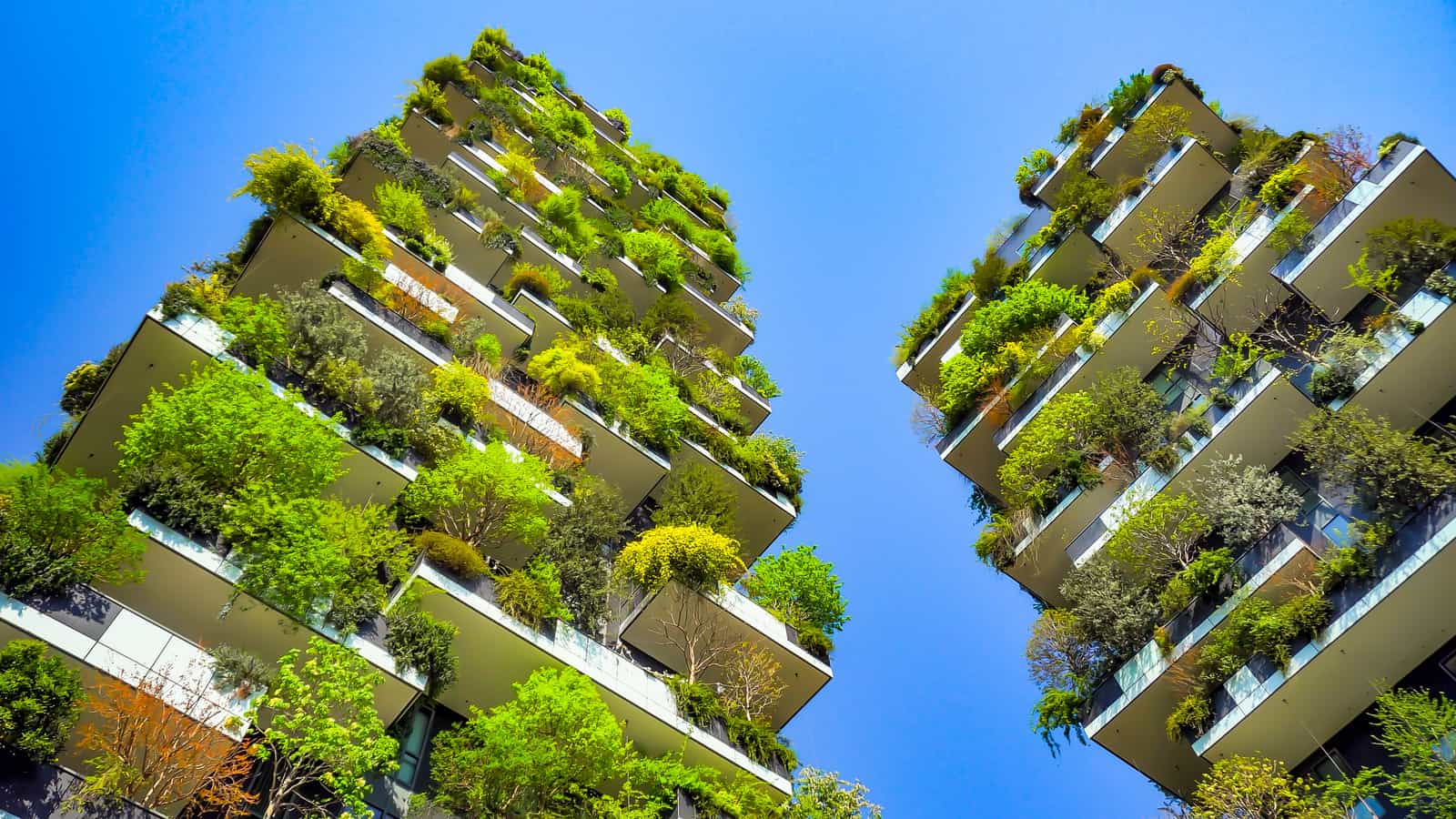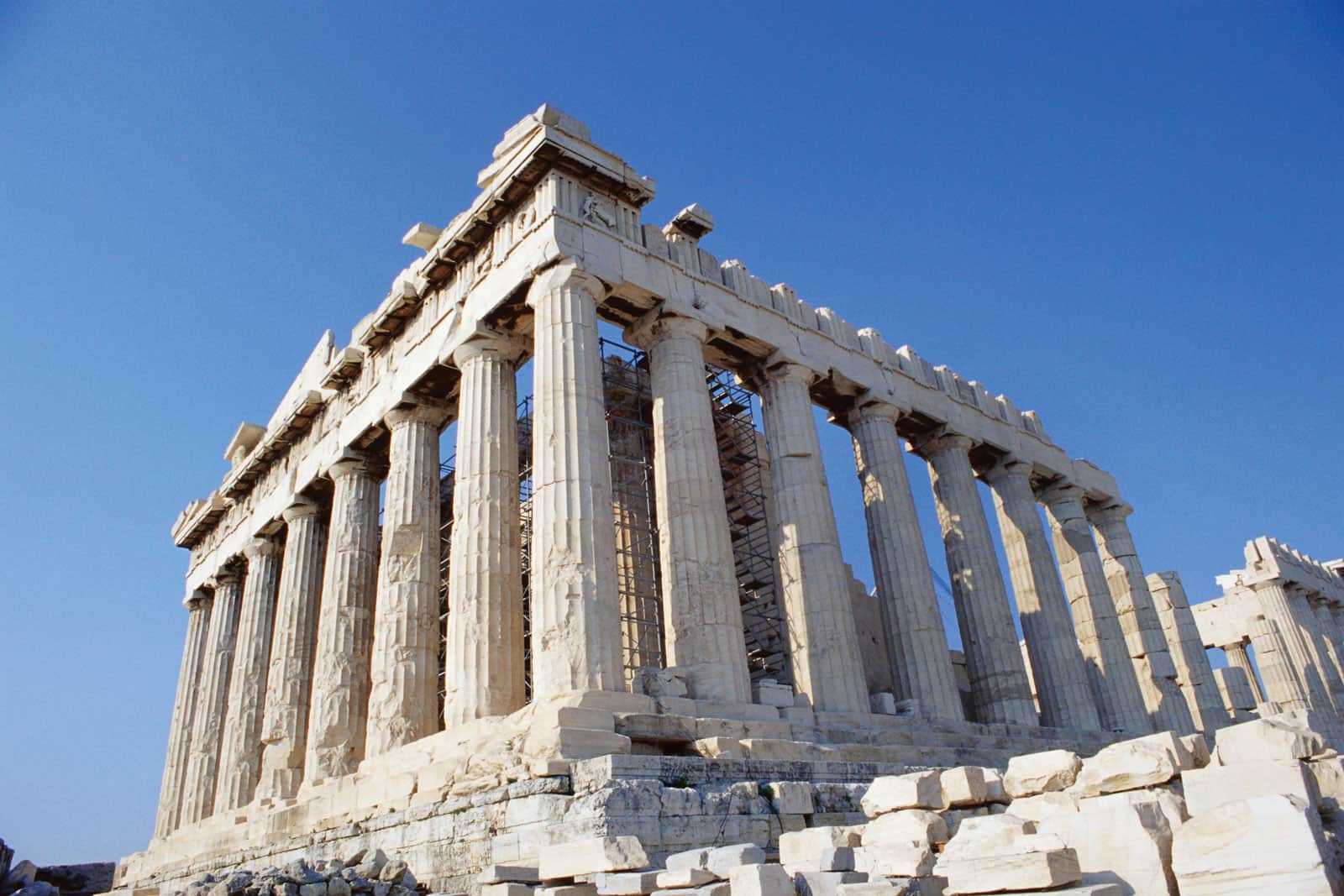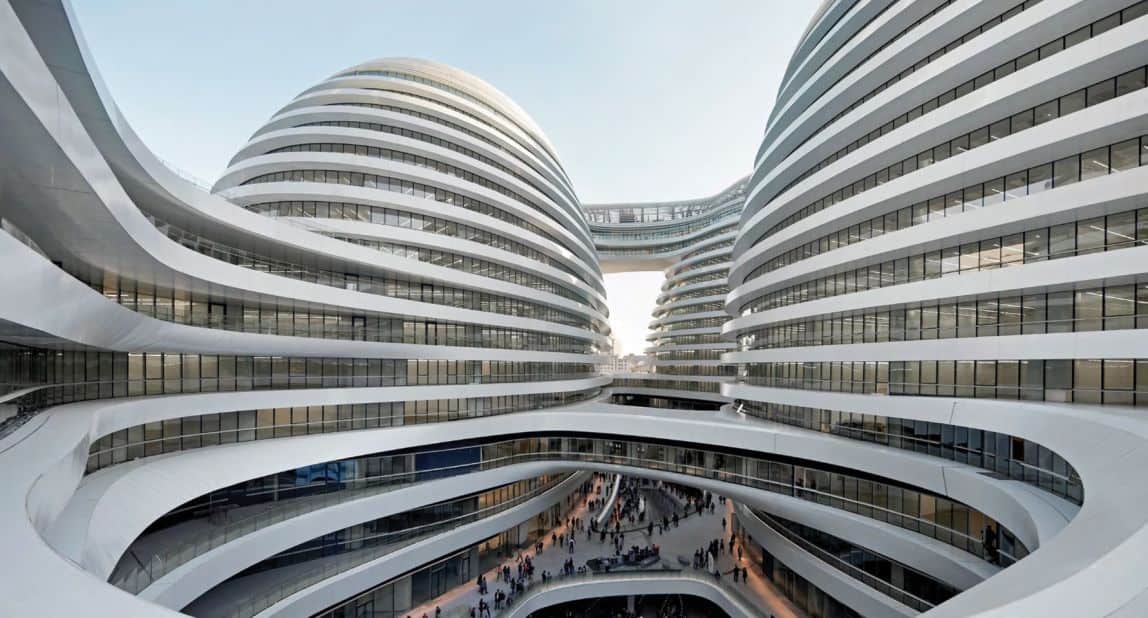Dame Zaha Hadid will undoubtedly be remembered as one of the outstanding architects of her generation.She was one of the most radical architects of the 21st century and she is still designing today.Zaha Hadid Architects comprise her firm and can be considered among the best architecture firms now.
Her architectural style is described as strongly futuristic with curved form, sharp edges and severe forms of glass, plastic, concrete, and steel.Her style is called deconstructivist ¬– a postmodernist school that involves breaking or reassembling forms it into new structures.This made her earn the nickname Queen of the Curve from an article in the Guardian.
For this reason, Zaha Hadid has proved appositive example of how creativity, the lack of fear, and the desire to experiment can result in many prestigious awards.Dame Hadid was the first women ever to be so honored with this very important award that is known as Pritzker Architecture Prize.The 2010 & 2011 Stirling Prize for Heydar Aliyev Cultural Center, the 2014 Design Museum Design of the Year and in 2016, the first woman to be awarded the Royal Institute of British Architects Gold Medal.
We will be reminiscing on her stunning contributions in what she left behind in the architectural world like Beijing’s Galaxy Soho, and her input on art museums.
A Brief Biography of Zaha Hadid
Zaha Hadid (Iraqi -British) was born in Baghdad, Iraq, in 1950. She had graduated in mathematics, and architectural studies at the Architectural Association in London.She later started her own firm in London in 1980.Zaha Hadid entered into the architectural scenes in 1983 after completing her work Peak Leisure Club, Hong Kong.
Though the project was never implemented, the schemes clearly differed and noticeable meant a translation of the potential of Zaha Hadid’s innovative creativity As has been researched, she wanted to compare herself with spatial constraints and strive to overcome their limits, thus deviating from mere schemes.
She was mentored by a world-renowned architect, Rem Koolhaas of OMA, and others. Those close to her saw that she was very demanding and would not permit herself or others to give less of what she expected out of them.Architecture is like writing said Zaha Hadid.‘It has to be rewritten again and again and you end up with something that appears to have been done quickly.’
With Dame Hadid, however, one thing that was very clear was that she was always planning way ahead.She once said; `I began practicing with an intention of designing buildings that would stand out like precious stones and now I wish to have them breath into one another, complement and expand into a new landscape, into post-modern cities and lives of their inhabitants. “
11 Striking and Iconic Zaha Hadid Buildings
1. Vitra Fire Station, Weil am Rhein (1993)
Vitra Fire Station was the first wholly built project with Zaha and it contains typical flamboyant and vigorous movements typical for most of her projects.Her(style sounding progression) was raw concrete and glass.She created a sculptural work consisting of sharp diagonal mass colliding at the center.
The need was arising from the commission to create and construct a building to address and prevent future disasters as the structures at the Vitra Campus were burned down by fire.
The outcome became LEED’S experimentation with set atypical, slanted planes that collided with one another.While the architectural community wanted everyone to appreciate it, the firemen could only take the daring geometries and designs of the establishment.Also, there was an establishment of a new fire station in Weil-am-Rhein.This made the building to be shorter used and therefore the Vitra Fire Station is today employed for exhibitions.
Image: Vitra Fire Station, Weil-am-Rhein
2. Guangzhou Opera House, Guangzhou, (2010)
The Chinese and much of the world got to know The Guangzhou Opera House through the preeminent Iraqi-British architect Zaha Hadid who referred to it as ‘like pebbles in a stream smoothed by erosion’.She later claimed that was what gave form to this.The smoothly polished stones roll between the large solid portions and the clear portions where a tremendous supporting structure is revealed that is used to make each fold or bend.
The nature of the structure exhibited at the Guangzhou Opera House is good example of architecture that embraces structure.Guangzhou Wuyang Chinese Restaurant is situated in Wuyang business district, in the city’s cultural region, so it provides beautiful backgrounds for photography since it’s close to the Pearl River.The structure was to conform to the peculiarity of the river Bank.
The Guangzhou Opera House has been de signed in the form of two stones at the shore of Pearl River.The main auditorium interior is clad with abstract gypsum the matching flowing shapes, accentuated with the thousands of small lights reminiscent of starry sky.
It is not only that Zaha Hadid drew a beautiful and magnificent building, thus she provided the society and the region a tool through which they could develop and consolidate the area as the cultural core of operations in Guangzhou.
Image: Guangzhou Opera House, Guangzhou
3. Phaeno Science Center, Wolfsburg, (2005)
Dame, Hadid was awarded an international design competition in 2000 that led to her being commissioned for the Phaeno Science Center.Her building was designed with futuristic architecture and was a modern, graceful solution; they meet the center’s needs dedicated to science.The Phaeno Science Center is today still universally considered one of the best examples of Wolfsburg architecture in Germany.
The Phaeno science center is constructed of fat concrete cones and is a new, soaring cathedral to curves, angles, split planes and bold intrusions. This grand construction has the feel of levitating off the ground. This leads to the creation of an outdoor public plaza that indeed engages the site and orients viewers toward the museum.
The massive concrete panels fluidly “bend” to embrace the curves and apart from the distant windows, lend no break to the heavy concrete darkness.The museum has a complex structure like an enormous ship with a sliding roof and randomly placed asymmetric windows.There are angled pillars and through to the roofing there is a framework of exposed steel which gives an intergalactic feeling, like being in a space ship.
The futuristic design won a 2006 RIBA European Award.
Image: Phæno Science Center in Wolfsburg, Germany
Image: Interior of Phæno Science Center in Wolfsburg, Germany
4. Sheikh Zayed Bridge, Abu Dhabi, (2010)
The Sheikh Zayed Bridge deserves a mention in this list, although it is not a building, due to Hadid’s uninspired design. It was constructed to commemorate the country’s chief planner and former president, Sheikh Zayed bin Sultan Al Nahyan and links Abu Dhabi Island with the Gulf’s south coast.The bridge also hosts a pedestrian sidewalk as well as four traffic lanes.
The Sheikh Zayed Bridge comprises of curved arches which represent sand dunes on the surface.The 842-meter Shenshi Heyun bridge looks great especially when it is in the night and the spine has colored lights on it.At a glance, the structure bears the look of a sketch made in outline and left in a deep freeze overnight.
Sheikh Zayed Bridge, Abu Dhabi, United Emirates
5. Heydar Aliyev Center, Baku, (2012)
The Heydar Aliyev Center could definitely be named one of the most recognizable buildings which were created by the architect.The company was contracted through a design competition in 2007 and acts as the design architects of the building.Due to the historical experience of belonging to the Soviet Union, the architecture of Baku retained architectural and urban concepts of the Union.As a result, after gaining independence in 1991, Azerbaijan focused greatly on a cultural shift in an effort to modernize its architecture and physical vitality.
One of the results was the Heydar Aliyev Center. Thus, the construction achieved an ethereal sense of the minimalistic and balance between the building and the territory.The Heydar Aliyev Center was intended for becoming the main building for the country’s creative processes and is an embodiment of the optimistic outlook of a nation toward the future.
In 2014, the Center won the Design Museum Design of the Year Award
Image: Heydar Aliyev Cetre, Baku, Azerbaijan.
6. Galaxy Soho, Beijing, (2012)
Galaxy SOHO is among the most futuristic of all that Zaha Hadid has designed.The design style entails four domed structures connected by a variety of more defined inter-connecting bridges and ramps.These in turn generate areas while the platforms look to establish something of an aisled center area of the store or perhaps market.
The design and construction of the Galaxy Soho bears resemblance with other constructions by Zaha Hadid in Beijing, the Wangjing Soho.Regarding the construction and design of the building, the central or the larger part is a courtyard that is based on Chinese type of space.This retail and entertainment building is 18 storied building with interior courts that reflect traditional Chinese style.
The building itself is great example of how architecture can take little functional ideas from others while at the same time establishing its new identity or continuation of the language used.What makes it iconic is, while maintaining Chinese methods of centralization means it is traditional in organization, nothing else is.
The Beijing Cultural Heritage Protection Center criticized the structure because they found it unfitting in terms of typology, hue and scenery for Beijing.It may similarly be suggested that Hadid did meet the needs of the city in her very unique manner.The bridges and connections and the design even formed intersections that would “answer Beijing’s diverse spatial references and volatility.”
Image: Galaxy Soho, Beijing, China
7. London Aquatics Centre, Stratford, (2012)
The Guardian described it as the ” most jaw-dropping municipal swimming pool in the world.” The London Aquatics Centre was constructed to provide the 2012 Olympics and was intended to seat 17, 500 persons.Located in Helsinki, the Centre features two 50 meters swimming pools and is designed reflecting the continuous movement of water.The structure also has a wave form that is made from steel and aluminum and stands on three legs.The roofs also have cutouts that resemble windows which admit natural light into the space across the blue water of the pool.
Image: London Aquatics Center, Stratford
8. 520 West 28th Street, (2017)
Highline in Newyork City is famous for it has very excellent and attractive architectures.The Highline is a former railroad track overlaid with a public park in NYC’s West Side While 520 West 28th street includes some of the geometries which are characteristic of Hadid’s architectural and design work.
The first floor of 520 West 28th Street has four art galleries.There is also luxury apartment homes, and a duplex penthouse which is set back from the perimeter of the building.Integrated into an L-shape, the public walking through the High Line can enjoy a great side of Hadid’s and the only New York City’s residential building.
.
Image: 520 West 28th Street, New York
9. Rosenthal Contemporary Arts Center, Cincinnati, (2003)
The Rosenthal Contemporary Arts Center can be define as a series of firsts First of allIt was the architect Zaha Hadid’s first built work in the United States; her initial museum commission; and her first built project in an urban environment.
It is one of the few projects of Hadid that incorporate the use of cubic shapes.This was also the first museum in America developed under architecture created by a woman.The staircase inside the art museum shows how Zaha Hadid has skillfully used architectural curves for the production of the interiors’ theatrics.She does this with 30 metre long black stairway going through massive curving and angular concrete walls.
Rosenthal Contemporary Arts Center, Cincinnati
10. Riverside Museum, Glasgow, (2011)
The Riverside Museum was Zaha Hadid’s first important building in Britain and it was known as ‘Glasgow ‘s Guggenheim’.This building has been awarded as the best museum in Europe in 2013/There is an interesting zigzag roof made of zinc and a 36m high glazed facade facing the River Clyde.
It is erected on the plot of the former shipyard; the construction used the framework made of steel.It contains a 7,000 square meter column-free gross area for exhibition.It was seen that there are critics considering the prowess of the Riverside Museum in its exhibition area display strategy where several types of exhibits are located far away and up on the wall.
Image: Riverside Museum, Glasgow
11. Beijing Daxing International Airport, Beijing 2019
More familiarly known as the starfish, this Beijing’s second international airport and the biggest single constructed terminal in the world.It is among the projects that the company completed under the direction of its legendary founder, Zaha Hadid, who died in 2016.The envisaged traffic level at the airport for the year 2025 is 72 Million passengers per year.
Therefore with this in mind, it was designed, aimed at rationalizing passenger movements and minimizing the number of gates that had to be walked between.Some areas were left basic by segmenting airport programs into floors for international voyage and domestic voyage because security is not equal.The airport poor has Some of Zaha Hadid elements of curves but all in all the building has curves.
Image: Interior of Beijing Daxing International Airport, China
Image: Beijing Daxing International Airport, China

